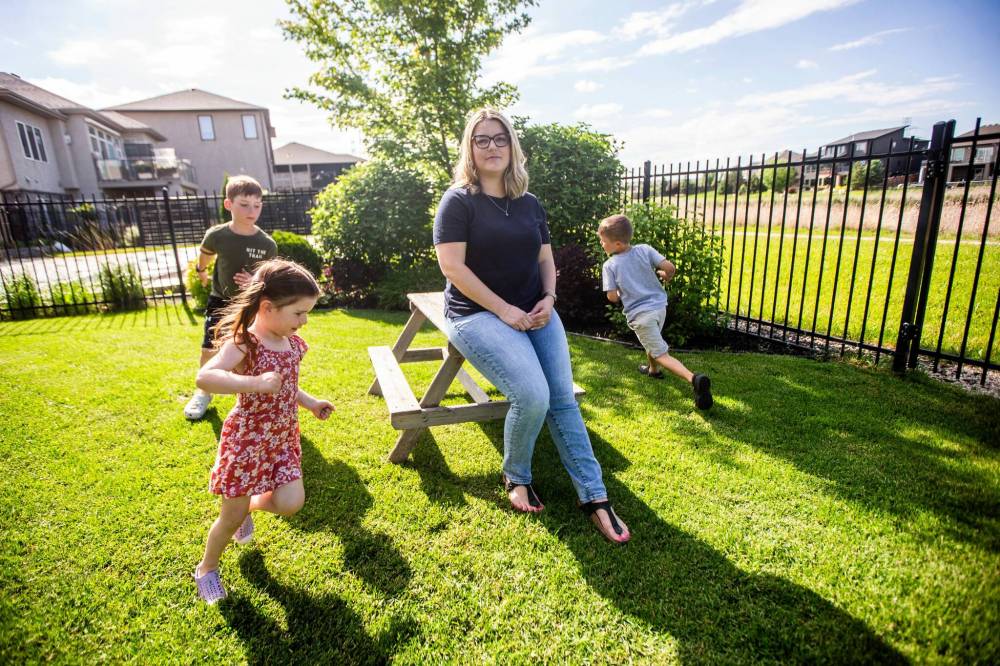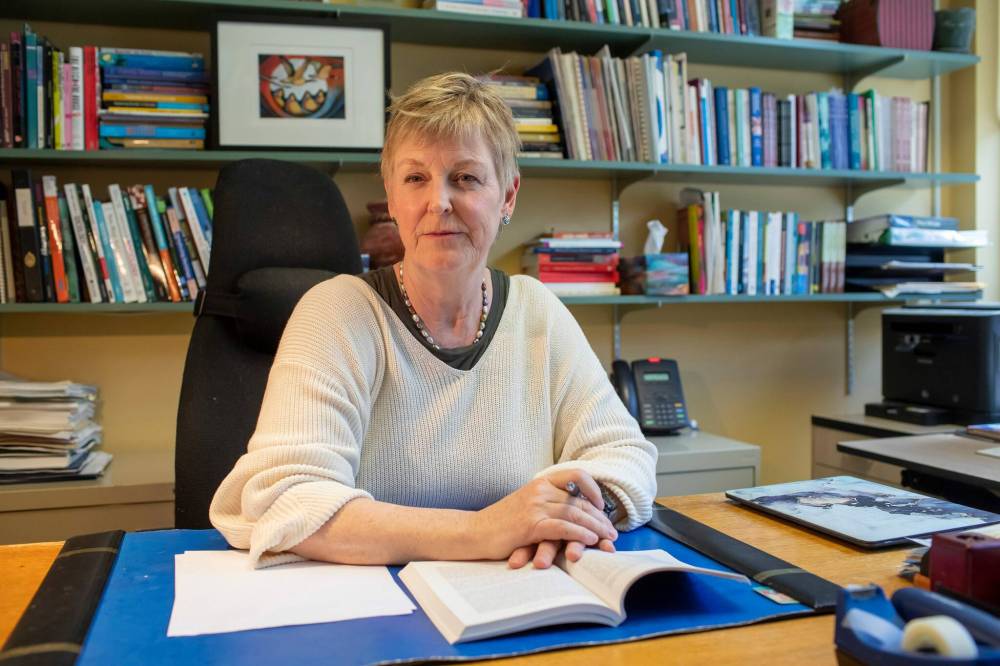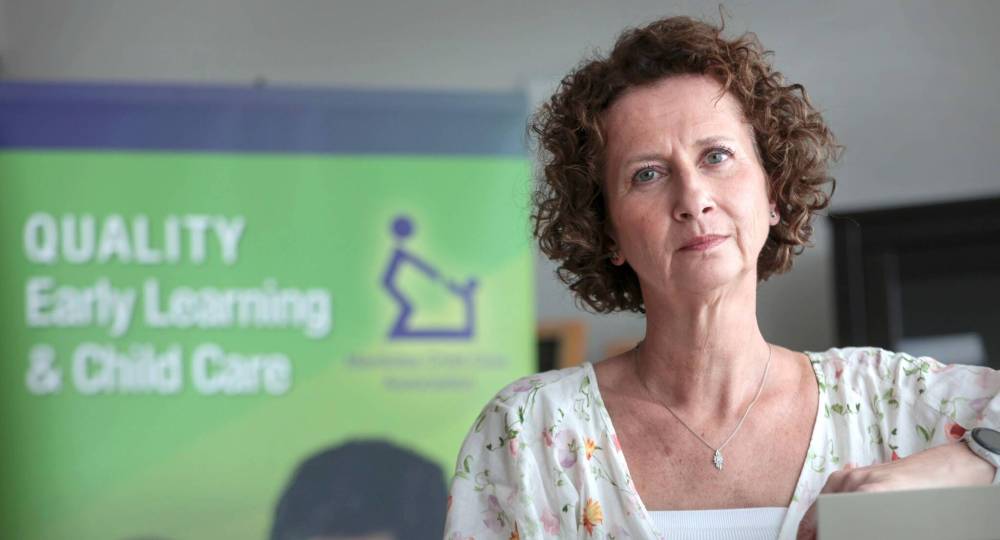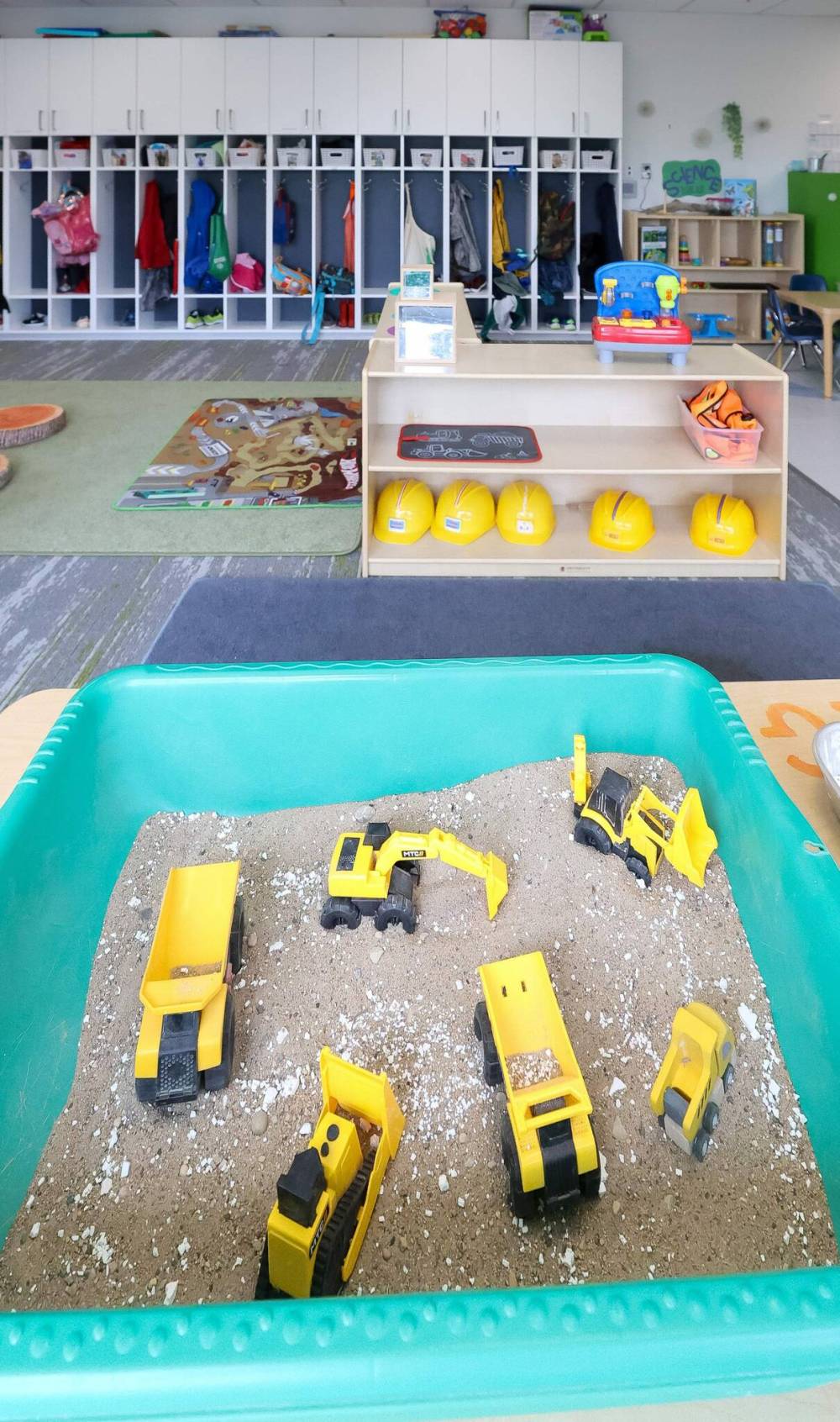Child care is the great equalizer. Even if you don’t need it, you likely rely on someone who does.
But while society at large benefits when families have access to high-quality child care, it’s not guaranteed to anyone. Ultimately, government policies have made it a matter for the domestic realm, rather than the public sphere, experts say.
“We’re still stuck in the 19th century,” said Susan Prentice, a professor of sociology at the University of Manitoba.
“We still think that there’s this giant iron wall between what happens inside families and what happens inside the labour market.”
That, she says, is an illusion.
In fact, research and case studies bear out that investing in child care pays off in a range of benefits, including economic gains, the positive impacts of healthy child development and the promotion of gender equality, which combats the “motherhood penalty.”
The Free Press has been conducting a months-long investigation into the state of child care in Manitoba. Interviews with dozens of child-care experts, advocates, parents and staff, along with in-depth data analysis, reveal a lack of transparency regarding child-care centre inspections; a failure of centres to meet minimum government standards; parents having no or little recourse when something goes wrong; a systematic inability to provide adequate care to children with special needs; and limited access to care in rural and northern regions.
At the heart of each story, a question remains: why do Manitoba families struggle to access high-quality, flexible, affordable and inclusive child care?
Experts point to outdated thinking: your kids, your problem.
Asked for her thoughts on Manitoba’s child-care system, Steph Seier says, “there isn’t one.”
Seier, a Winnipeg nurse, said her experience trying to find child care for her three kids left her so desperate she ended up joining a centre’s board, becoming president and pushing for the construction of a new school-age site.
“I learned how to be a commercial real estate negotiator,” she said. “I learned how to negotiate… loans with banks, I learned how to do bids with architects and then do full construction managing — as a volunteer.”

MIKAELA MACKENZIE / FREE PRESS
Steph Seier with Connor, 9, Brooklyn, 4, and Theo, 6 (right). Seier said trying to find reliable care left her so desperate she joined a centre’s board, becoming president, and pushing for a new school-age site.
Her child-care-seeking years were trial by fire, as they are for many Manitoba parents.
When she was pregnant with her first son 10 years ago, she put him on a centre’s wait list but had no success. She recalls visiting unlicensed home daycares and leaving in tears, knowing she would be constantly worrying about his safety. Eventually, she got him and her next child into a licensed centre in Sage Creek. But after she had her third child, her eldest was aging out of that centre. She ended up hiring a nanny for his before- and after-school care, while paying for daycare spaces for her two younger kids.
“It was very expensive and almost makes it not worth working,” she said.
Eventually, in 2023, after years of hard work and with the support of her centre’s board and executive director, the new school-age child-care centre was built. All three of her kids now attend licensed child-care centres.
In Manitoba, just one in five children, or 20 per cent, have access to a licensed child-care space, according to a 2023 annual report from the Department of Education and Early Childhood Learning. The report shows that while 29 per cent of children five years of age and younger have access, only 12 per cent of children between the ages of six and 12 do.
Demand is so high that the Manitoba Child Care Association (MCCA), which advocates for better child care, recommends parents put their child on a wait list before they’re even born. In 2018, those province-wide wait lists contained 16,600 names. It’s not clear how long the waits are today as the province no longer maintains the same centralized tracking system.
Even if parents are proactive far in advance, they still might be out of luck — multi-year wait lists are the norm in urban areas, the MCCA says.

BROOK JONES / FREE PRESS
U of M Prof. Susan Prentice says the system has been mired in outdated thinking.
“This is an enormous stress for families,” Prentice said. “It’s a terrible burden on parents.”
Why does the situation remain so desperate in Manitoba and elsewhere in Canada? Prentice points to what society deems important.
“At a certain point, it comes down to your values. What do citizens owe each other?” she said. “Things that are associated with children, with women and with family have been a low priority.”
This is evident when a comparison is made to other essential services, she said. For instance, while the country has collectively decided education and health care should be public and accessible to all, early childhood education and child care have largely been relegated to the non-profit or private sector.
Jodie Kehl, MCCA’s executive director, argues child care should be an “inherent right.”
“Whether you are in Winnipeg, Thompson, Dauphin, whether your parents are working or not working, whether you are in foster care, it doesn’t matter,” Kehl said. “You have the right to be in a high-quality early learning and child-care program.”
Without it, essential services that keep the economy running start to fall apart, she said. One only has to look back to chaotic points in the pandemic when children were out of school and parents were not able to access child care. Suddenly, even if you weren’t a parent, you realized that “everybody relies on somebody who relies on child care,” she said.
In other countries — even provinces — things work differently.
“The best examples are found all across Europe,” Prentice said.
In Sweden, municipalities must find child care for children within three months and it costs three per cent of a family’s income for their first child — and less for future children — to attend.
“Extremely affordable,” Prentice said.
The majority of Swedish families access child care, with 75 per cent of all children five and under in child care, according to the country’s ministry of education.
And the quality? High.
“Some of the people working in your child-care centres will even have master’s degrees in pedagogy and early childhood development,” she said.
In Denmark, every child is guaranteed access to child care from six months and up. Wait lists are no more than a few weeks or months. Upwards of 90 per cent of children a year old and up are in child care. Local government covers 75 per cent of the child-care costs and parents pay the remaining 25 per cent.
Studies show the benefits of guaranteed child care are wide-ranging, with notably more women in the workforce.
Quebec has seen similar success.
In 1997, faced with low rates of women in the workforce, the province launched low-fee, subsidized universal child care, charging just $5 a day. Initially only for four-year-olds, it later expanded to include all young children. It’s been in place ever since, with only slightly higher fees. Now, Quebec leads the pack with the highest percentage of children under the age of six in any form of child care, at 71 per cent, according to 2022 figures from Statistics Canada. Manitoba has the second-lowest percentage, at 48, just above Ontario’s 41 per cent.
Quebec is “completely normalizing child care,” said Gordon Cleveland, associate professor emeritus of economics at the University of Toronto Scarborough.
“It is unusual for you not to be putting your kid in licensed child care in your local neighbourhood,” he said.
And it’s paid off.
Figures from Statistics Canada via a study by economist Pierre Fortin at the University of Quebec at Montreal show that over a roughly 25-year period, since the policies were put in place, working-age women’s participation in the labour force in Quebec jumped from 74 per cent to 86 per cent (figures that include all women aged 25-54, not just mothers). Comparatively, other provinces are in the low 80s.
“There’s a very big payback,” said Cleveland, who is also a member of the National Advisory Council on Early Learning and Child Care. He notes the figures suggest Quebec is effectively combating the “motherhood penalty,” where women’s income drops after children are born.
Indeed, it’s often the mother who takes the pay hit, forced to leave the workforce when no viable child-care options are available, said Prentice, the U of M sociology professor.
“Women are the safety net,” she said.
“When you enable families to have the number of children they want and you support their ability to balance care and work, the child-care system you put in place will pay for itself.”–Susan Prentice
As for the actual economic payoff, a 2013 study from Fortin and other researchers calculated that in 2008, the fiscal surplus Ottawa and Quebec City received as a result of Quebec’s child-care program was $900 million. The researchers estimated there were 70,000 more Quebec mothers employed than there would be without the program. It more than paid for itself.
This comes as no surprise to Prentice.
“When you enable families to have the number of children they want and you support their ability to balance care and work, the child-care system you put in place will pay for itself,” she said.
Quebec’s system is not without its faults — Cleveland points to initial criticism of the quality of the care offered and an influx of for-profit providers — but its launch was ambitious, creative and has largely been hailed as a model for the rest of Canada to follow.
While other countries and the Quebec example demonstrate the economic benefits of universal child care, Kehl remains focused on the value it can bring to children.
She’s also eager to dispel misconceptions. For one, it’s not “babysitting” or just a place to drop off kids so parents can return to work, said Kehl, the MCCA’s executive director. The true value of high-quality child care is childhood enrichment — giving children a solid foundation to develop important life skills, such as problem-solving and building emotional intelligence.

Ruth Bonneville / Free Press
Jodie Kehl, executive director of the Manitoba Child Care Association, says everyone has a right to access high-quality early learning and child-care programming.
“Are they just finger-painting? No. They’re using small motor skills, they’re talking about creativity, they’re talking about expression,” said Kehl, sitting for an interview in an office filled with books about child-care development.
“We have to shift that perception.”
While it’s unclear the full extent to which high-quality child care affects children later in life, some studies show it positively influences long-term learning and development, improves educational achievement and diminishes the chances of involvement in crime.
Regardless, Kehl is content for those in positions of power to choose whichever argument suits them best: better outcomes for kids, or better economic payoffs for parents. If it pushes Manitoba toward a better, universal child-care system, that’s a win.
Child-care experts stress there’s no need to reinvent the wheel to bring about positive change — made-in-Manitoba recommendations already exist.

MIKE DEAL / FREE PRESS
Studies show the benefits to guaranteed child care are wide-ranging, with notably more women in the workforce.
In 2015, the former NDP government established a Manitoba Early Learning and Child Care Commission to come up with recommendations for implementing a “universally accessible child-care system.”
Among the recommendations were to bring school divisions on board, with the commission recommending divisions take over child care for children six to 12 years old before and after school, on professional development days, on school holidays and during the summer; increase child-care availability by, among other things, constructing child-care centres on publicly owned land and finding space in local government buildings like libraries and community centres; making child care more affordable, possibly by ensuring families with median annual incomes pay no more than 10 per cent of their income for care, and that families below the median pay less than that; introduce a provincial wage scale for child-care workers; and do a better job of tracking data.
Education and Early Childhood Learning Minister Nello Altomare said in a statement that the new NDP government is continuing to engage with key players following the commission’s recommendations.
In a separate statement, the province noted every new school or major renovation to a school must include a child-care centre, as per the Child Care in Schools policy, enshrined in legislation in 2011. Since 2021, the provincial government has also committed to more than 100 capital projects to create more infant and preschool spaces, with community-based partners, Indigenous governing bodies, municipalities, school divisions and post-secondary institutions, the statement said.
One thing child-care experts don’t want? Bill 47.
Under the Pallister government, the PCs argued that Bill 47, the Early Learning and Child Care Act, would modernize child care, create more after-hours and flexible care options, and allow more providers — for instance, dance studios that offer child care — to become licensed.
But experts worry the bill, which received royal assent in 2021, but which hasn’t yet been proclaimed into law, would open up public funding for unregulated and for-profit centres, something Prentice calls “bad policy.”
“Quality standards would be loosened,” she said. “Licensing oversight would be weakened.”
Prentice also worries about other potential issues with the bill, including what she calls a “dilution” of early childhood educator qualifications and training requirements.
The NDP government’s position on Bill 47 is unclear as the province did not respond to a question asking if they support it.
As for the Early Learning and Child Care Commission’s recommendations from nearly a decade ago, some have been fulfilled, including one ambitious project now being rolled out.
The Ready-to-Move Child Care Project was launched in late 2022 under the former Tory government as part of its plan to create 23,000 new full-time child-care spaces by March 2026. The project involves building modular facilities off-site, which are then relocated to a permanent foundation in a community. The federal and provincial governments chip in $120 million to cover the cost of the building, which is given to municipalities or First Nations in exchange for their donation of land, servicing and free rent for 15 years for the child-care operator.

MIKE DEAL / FREE PRESS
Lori Renton (left) is executive director of Bright Beginnings Educare and Jasmin Spence is the Headingley facility’s site manager. The child-care centre was the first to open under the Ready-to-Move (RTM) Child Care Project launched in late 2022. The project involves building modular facilities off-site, then moving them into communities.
To date, there are 10 Ready-to-Move facilities in communities including Headingley, Stonewall, Ile des Chênes, Whitemouth, Portage la Prairie and St. Adolphe. Each has 74 child-care spaces, for a total of 740 spaces. The goal is to have a total of 1,970 new child-care spaces in 25 rural and First Nations communities in Manitoba by the time the initiative is complete.
While acknowledging the project won’t reach the goal of 23,000 spaces, Prentice calls the initiative “brilliant” and “innovative.”
“Manitoba deserves a lot of credit for setting this up,” she said.
A trip to one Ready-to-Move site in early June suggests the project is a success. At the Bright Beginnings Educare Inc. Heartland site in Headingley, which was the first Ready-to-Move centre built and opened last August, the space is clean, bright, and full of colourful toys and structures. It has three outdoor fenced areas for kids to play in, with expansions coming, and is surrounded by green space.
It was a hot day and kids were playing outside, spraying staff with water — occasionally reminded to “ask first” — sharing toys and climbing on a kid-sized wooden picnic table.
“Those kids over there look like they are being curious, it looks like they’re looking at height,” said Lori Renton, the centre’s executive director, watching the scene. “There is a real purpose of play — it’s about teaching (them) how to grow up, how to build confidence and self-esteem.”
Inside, the infant group was taking a nap, with a staff member rubbing one child’s back and another overseeing the cribs. In another room, children were snacking while others played in the kids’ kitchen. Staff communicate via headsets, keeping tabs on kids and making sure the transition from one activity to another goes smoothly.
The centre operates like a well-oiled machine, but parents seeking spots there are likely out of luck. Their wait list is 560 children long.
“There is a huge demand,” Renton said. “Like everywhere.”
— With files from Jeff Hamilton
katrina.clarke@freepress.mb.ca

Katrina Clarke
Investigative reporter
Katrina Clarke is an investigative reporter at the Winnipeg Free Press. Katrina holds a bachelor’s degree in politics from Queen’s University and a master’s degree in journalism from Western University. She has worked at newspapers across Canada, including the National Post and the Toronto Star. She joined the Free Press in 2022. Read more about Katrina.
Every piece of reporting Katrina produces is reviewed by an editing team before it is posted online or published in print — part of the Free Press‘s tradition, since 1872, of producing reliable independent journalism. Read more about Free Press’s history and mandate, and learn how our newsroom operates.
Our newsroom depends on a growing audience of readers to power our journalism. If you are not a paid reader, please consider becoming a subscriber.
Our newsroom depends on its audience of readers to power our journalism. Thank you for your support.